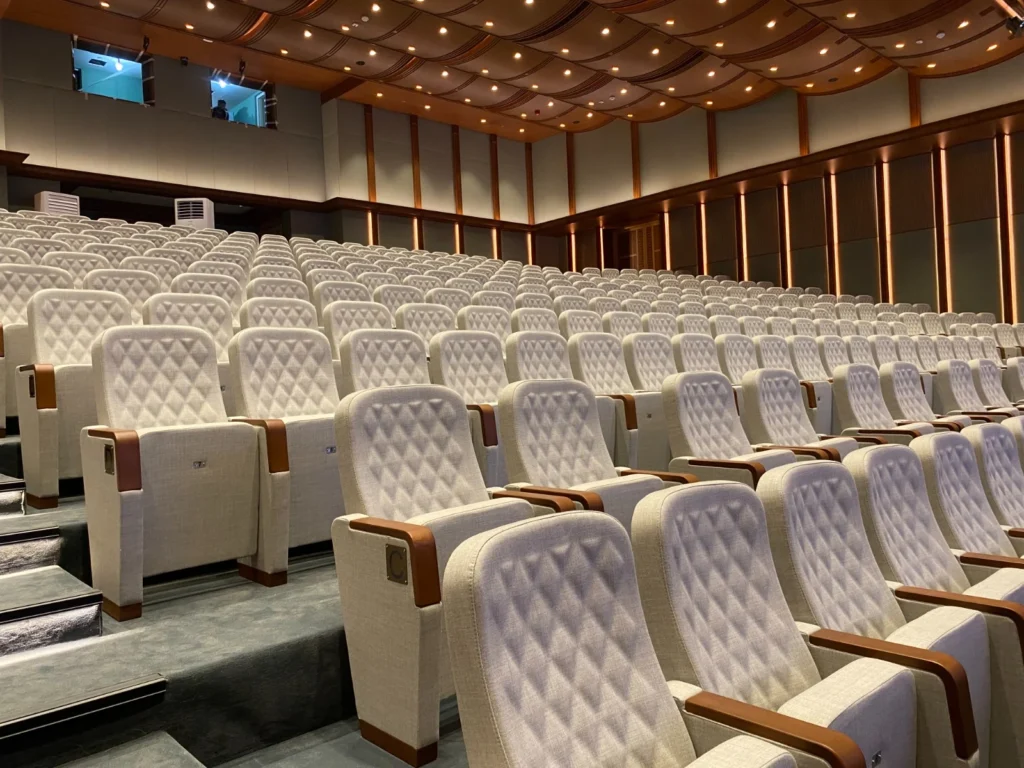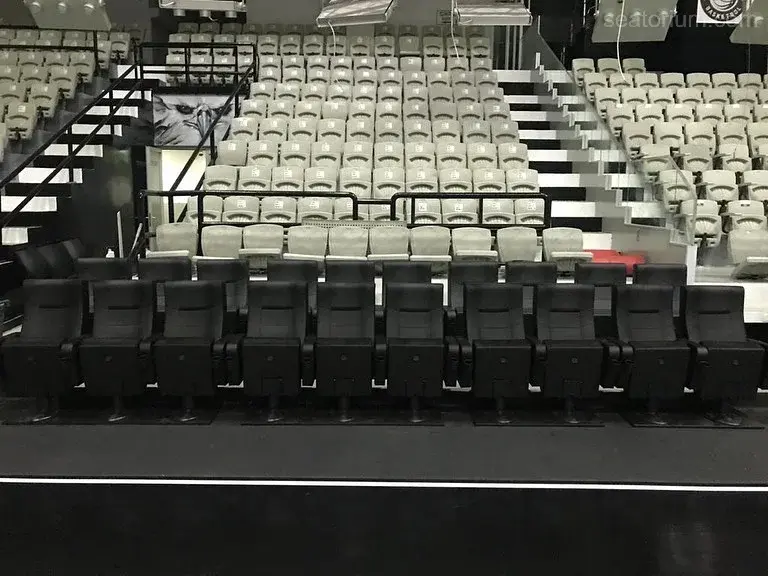Walking into a new auditorium has always carried a sense of wonder. But have you noticed how auditorium hall trends have been evolving rapidly in recent years? Venues no longer serve as static spaces with rigid rows of seats and a stage. Instead, they are being reimagined as dynamic environments that shape the way audiences engage with performances, conferences, and large-scale gatherings. Professionals across the globe – from project developers to architects and contractors – are looking for solutions that elevate both functionality and audience experience. Let’s explore the directions that are redefining modern auditoriums and how they’re reshaping the expectations of the industry.
Table of Contents
Auditorium Hall Trends That Are Shaping the Future
So, what makes an auditorium truly future-ready? The latest auditorium hall trends emphasize adaptability, technological integration, and a deep commitment to user-centered experiences. Gone are the days when a hall was designed only for one type of performance. Instead, multipurpose layouts, intelligent seating systems, and advanced acoustics are setting new standards.
Have you ever wondered why international venue projects are now investing heavily in hybrid-ready spaces? The answer lies in the fact that decision-makers want auditoriums that can seamlessly host live events while simultaneously connecting with digital audiences. This shift is redefining the purpose of an auditorium — it’s no longer just a place for people to gather physically but also a platform for global connectivity.
The Rise of Auditorium Design Trends
Auditorium design trends are moving away from rigid templates and heading toward innovative layouts that break the monotony of traditional spaces. Instead of long, uniform rows, designers are experimenting with wide fan layouts and continental seating plans that maximize sightlines and create an inclusive atmosphere for every audience member.

The Power of Immersive Design
With the demand for immersive auditorium experiences, spatial design is no longer just about function. Projection mapping, LED walls, and dynamic lighting setups transform spaces into living environments. Imagine a corporate event where the entire hall can change its visual identity in seconds—such flexibility is exactly what modern investors are looking for.
Modern Hall Layouts That Attract Decision-Makers
When talking about modern hall layouts, it’s impossible not to highlight how modularity plays a central role. Unlike the past, where a single hall configuration dictated all uses, architects now design halls that can adapt within minutes.
Modular Seating Systems in Action
Modular seating systems allow event organizers to transform a venue from a theater-style layout into a flat-floor setup for banquets or exhibitions. In practice, this means reducing the turnaround time between events, which directly improves profitability for operators. Have you ever thought about how much additional revenue a venue could generate simply by hosting different event types on the same day? That’s exactly what modularity delivers.
Flexible Seating Arrangements for Multipurpose Use
Professionals across the globe are prioritizing flexible seating arrangements because they directly influence user experience and operational efficiency. Whether it’s retractable seating, telescopic risers, or reconfigurable clusters, flexibility empowers venues to serve corporate events, concerts, and seminars with equal ease.
Ergonomic Hall Furniture Matters Too
At the same time, ergonomic hall furniture is gaining attention. It’s not just about comfort during long conferences—it’s about supporting health, accessibility, and inclusivity. Choosing chairs that support posture and integrate with modular systems can make or break the audience’s perception of a venue.
Acoustic Improvements That Redefine Performance
No matter how advanced the layout is, poor sound can destroy the entire audience experience. That’s why acoustic improvements are at the heart of every successful hall project. From eco-friendly acoustics using recyclable materials to advanced digital sound modulation, acoustics are becoming both sustainable and technologically enhanced.
Balancing Sound and Sustainability
Have you noticed how sustainable hall designs are influencing acoustics? Developers are increasingly choosing bamboo panels, recycled PET fibers, and perforated wood composites that deliver excellent reverberation control while aligning with global sustainability targets. This balance between technical performance and environmental responsibility is setting a new benchmark in the industry.
Multifunctional Spaces That Drive ROI
One of the most impactful auditorium hall trends is the rise of multifunctional spaces. Venue operators want halls that don’t sit idle between shows. Instead, they are designing auditoriums that transform into classrooms, exhibition spaces, or hybrid meeting hubs.

Hybrid Venue Setups for the Digital Age
Hybrid venue setups have become essential. In an era where virtual participation has become standard, auditoriums need integrated streaming technology, broadcast-quality cameras, and seamless connectivity. This ensures that a live audience of 1,000 can be joined by a digital audience of 10,000 worldwide. Isn’t it fascinating how the definition of “audience” has expanded beyond physical walls?
Lighting the Way: LED Lighting Trends
Lighting is no longer just about visibility—it’s about atmosphere, storytelling, and energy savings. LED lighting trends are revolutionizing auditoriums with programmable fixtures that can shift from dramatic stage lighting to corporate-friendly brightness instantly. With energy consumption reduced by up to 60%, it’s clear why LED technology has become the global standard for new projects.
Performance Space Innovations That Inspire Audiences
Last but not least, performance space innovations are changing the game. Movable stages, automated rigging systems, and dynamic backdrops provide creative freedom to event organizers and performers. These features don’t just elevate performances—they also attract more high-profile clients to a venue, which directly strengthens its market reputation.
Final Thoughts on Auditorium Hall Trends
As you can see, the world of auditorium hall trends is not about small adjustments; it’s about redefining the role of an auditorium in modern society. From flexible seating arrangements to acoustic improvements, from sustainable hall designs to hybrid venue setups, every trend reflects a larger vision: auditoriums are becoming dynamic ecosystems where people, technology, and design intersect.
So, here’s the real question: when was the last time you entered an auditorium and felt it was designed not just for the event, but for you? That’s the magic of today’s evolving trends—and the promise of tomorrow’s spaces.